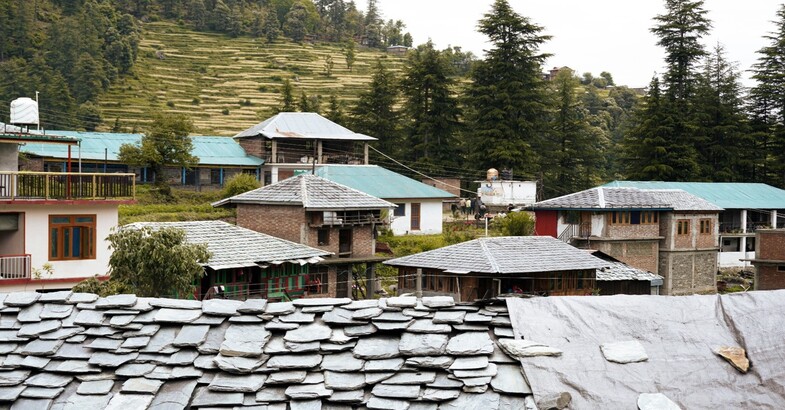
Introduction
While floods, wildfires, and storms caused by climate change often dominate headlines, a quieter yet critical issue is emerging-the thermal discomfort. This inability to maintain a stable body temperature, whether facing extreme heat or debilitating cold, impacts health, economic productivity, and social equity, yet remains an overlooked consequence of our warming planet. Human-induced warming (already 1.1°C above pre-industrial levels) is increasing the frequency and intensity of temperature extremes. Heatwaves are becoming drastically more common, while severe cold snaps persist as a threat, particularly in poorly built environments. The focus on acute climate disasters, while necessary, often overshadows the chronic and pervasive economic drain caused by thermal discomfort, subtly but significantly eroding GDP and human potential over time. This challenge disproportionately affects developing nations, hindering progress.
Thermal Discomfort: More Than Just Feeling Hot or Cold
Thermal comfort is the “condition of mind that expresses satisfaction with the thermal environment“. Discomfort arises when the body cannot balance metabolic heat generation with heat loss to the surroundings, often occurring below 18°C or above 24°C indoors, with tighter ranges recommended for vulnerable groups. Achieving comfort depends on environmental factors (air/radiant temperature, air speed, humidity) and personal factors (metabolic rate, clothing). Vulnerability varies significantly with age, health status, and occupation.
The Disproportionate Impact on Developing Nations
Developing countries bear the brunt of thermal discomfort due to intersecting challenges. A significant factor is the infrastructure gap, particularly inadequate housing. Globally, 1.6 to 3 billion people lack adequate housing, with 1.26 billion in 64 emerging economies living in homes offering poor protection from heat and cold (lacking durable materials, insulation, proper water/sanitation, or facing overcrowding). Over a billion people reside in slums, which are highly exposed to thermal stress.
Energy poverty exacerbates this, creating both a cooling gap and a heating deficit. While cooling demand surges, over a billion people lack access, with only 8% in the hottest regions owning ACs. By 2030, 1.18 billion poor individuals in high-impact countries could remain at high risk from heat. Simultaneously, affording adequate heating is a major challenge. Unreliable grids and high energy costs force difficult trade-offs. The Urban Heat Island effect intensifies heat in cities, while economic reliance on climate-exposed sectors like agriculture and construction increases vulnerability to both heat and cold. This creates a cycle of inequality, trapping vulnerable populations in poor conditions with limited prospects.
Beyond Health: Economic and Educational Hindrances
Thermal discomfort imposes significant economic costs. Heat stress severely cuts labour productivity, projected by the ILO to cause losses equivalent to 80 million full-time jobs globally by 2030 (2.2% of working hours), costing US$2.4 trillion. Agriculture and construction are hardest hit. Even moderate heat reduces a firm’s productivity. Cold stress also impacts productivity through cognitive impairment, reduced dexterity, and increased absenteeism/presenteeism due to illness.
These losses impact the national GDP. Heat stress could cost India 4.5% of GDP by 2030, while urban heat islands could reduce a city’s GDP by up to 10% by 2050. Cold homes cost economies billions annually through healthcare and lost productivity. Thermal discomfort also disrupts education. In 2024, climate events disrupted schooling for 242 million students, mostly in lower-income countries. Both heat and cold impair concentration and learning, and cold-related illnesses increase absenteeism. This erosion of human capital undermines long-term growth, especially in developing nations.
India’s Approach to Combating Thermal Discomfort
India is actively taking steps to address the escalating issue of thermal discomfort, driven by the significant impacts of climate change on its population and economy. One such significant initiative is the India Cooling Action Plan (ICAP), which aims to provide sustainable cooling and thermal comfort for all while minimising refrigerant use and energy consumption. This comprehensive plan acknowledges the cross-sectoral nature of thermal comfort, addressing cooling needs in buildings, transportation, and cold chains.
In conjunction with ICAP, India has been promoting energy-efficient building designs through initiatives like the Eco-Niwas Samhita, a residential energy conservation building code. This code encourages the use of passive design strategies, such as optimal building orientation, natural ventilation, and appropriate shading to reduce reliance on active cooling and heating systems. Furthermore, broader national frameworks like the National Action Plan on Climate Change (NAPCC) emphasise building climate-resilient infrastructure, which inherently includes considerations for thermal comfort.
Despite these significant efforts, certain policy gaps and implementation challenges persist. While there’s a strong focus on cooling, a holistic approach that also adequately addresses thermal discomfort from cold, particularly in vulnerable regions and for economically weaker sections, needs strengthening. The effective enforcement and widespread adoption of building codes like Eco-Niwas Samhita across all states remain a critical area requiring continuous attention and capacity building. There’s also a need for greater public awareness regarding passive design measures and behavioural adaptations to improve thermal comfort. Addressing these gaps will be crucial for India to effectively tackle the pervasive challenge of thermal discomfort.
Construction Boom: A Window of Opportunity
The global construction market is booming, valued at $9+ trillion recently and projected to grow significantly (potentially exceeding $15+ trillion by the early 2030s). Driven by urbanisation (adding 2.5 billion urban dwellers by 2050, mainly in Asia/Africa), population growth, and infrastructure investment, much of this growth is in climate-vulnerable developing countries.
This presents a crucial choice: build conventionally, locking in vulnerability and high energy demand for heating/cooling, or integrate resilience now. Building resiliently from the start is far more cost-effective than retrofitting. Climate-resilient buildings are increasingly seen as sound investments, mitigating risks and offering long-term returns. Seizing this opportunity can drive innovation in sustainable design and materials, creating green jobs.
Need for Climate-Resilience: Building for Comfort and Sustainability in All Climates
Tackling thermal discomfort requires shifting focus from increasing energy supply to drastically reducing energy demand for heating and cooling. This involves:
Passive Design: Utilising site, climate, and materials for comfort with minimal energy. Key strategies include optimal orientation (for solar gain/avoidance), effective shading, natural ventilation, strategic thermal mass, high-performance insulation, airtight construction (with ventilation), cool/reflective surfaces, green roofs, and appropriate glazing.
Sustainable Materials: Prioritising local, low-embodied energy materials (timber, earth), recycled content, and innovative options like Phase Change Materials (PCMs) that moderate temperatures and cut energy use.
Modern Construction: Employing methods like prefabrication for speed, quality (insulation/airtightness), reduced waste, and potentially lower costs.
Policy & Initiatives: Strong government support is vital. This includes robust building energy codes (like India’s Eco-Niwas Samhita), national climate plans (like India’s NAPCC ), infrastructure investment focusing on resilience (like India’s NIP), skills development, promoting nature-based solutions, and financial incentives/partnerships.
Conclusion: Rethinking Infrastructure for a Changing Climate
Thermal discomfort from both heat and cold is a pervasive crisis undermining health, economies, education, and equity. We must elevate thermal resilience to a global development priority, integrating it into all planning and investment. The ongoing construction boom offers a vital chance to build differently, prioritising passive design, sustainable materials, and efficient methods, supported by strong policies. Investing in resilient, comfortable infrastructure is not just about mitigating risk; it’s an investment in healthier populations, productive economies, reduced emissions, and more liveable, equitable communities for a future defined by climate change. The cost of inaction – measured in lost lives, lost livelihoods, diminished potential, and the exponentially higher expense of future adaptation and disaster recovery – is a price the global community cannot afford to pay. Rethinking our infrastructure now, to address the full spectrum of thermal challenges, is essential to building a world that can thrive, not just survive, in the climate ahead.

Authors Bio: Vibhor Bansal is a PGP graduate from the Indian School of Business, and an alumnus of JIIT, Noida. Working across multiple functions (marketing, operations, product, analytics, sales) in three different industries, he has developed data-driven and customer centric strategies to help organisations optimise their processes and reduce resource wastage. Currently, he is building an organisation (PLANet Zero) that provides climate-adaptive and passive infrastructure solutions.

Kaushikee Singh is a practising architect and a PGP graduate from the Indian School of Business. With experience spanning design, research, and development, she has worked on infrastructure projects in resource-constrained environments. Alongside her architectural practice, she has also co-built a material distribution venture, deepening her understanding of the supply side of the built environment. Her work blends spatial thinking with a strong focus on thermal comfort, a vision she is now advancing through PLANet Zero, a company creating climate-responsive infrastructure solutions.

